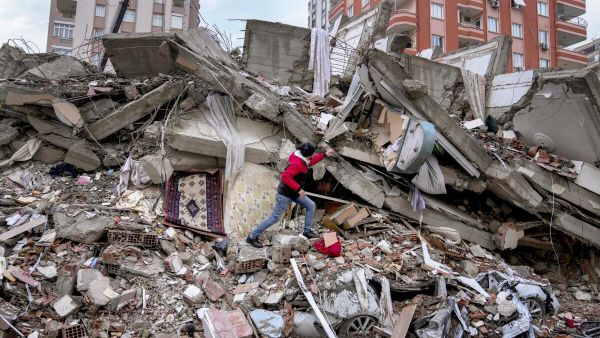ALBAWABA - Morocco witnessed challenging hours on Friday night and Saturday morning as a powerful earthquake struck the country, claiming the lives of hundreds and bringing back memories of the destruction seen in Turkey and Syria in February 2023 due to a similar earthquake.
The death toll from the Moroccan earthquake reached approximately 2012 with 2059 others injured. Hundreds remain trapped under the rubble.
The earthquake in Morocco registered 7.2 on the Richter scale, with its epicenter located 80 kilometers southwest of the city of Marrakech. It was felt by residents of many Moroccan cities and was followed by numerous aftershocks, some reaching up to 6 on the Richter scale.
Earthquakes are among the most powerful natural disasters in history, causing immense loss of life as well as significant financial damage.
Top five strongest earthquakes in recent history:
1952 Russian Earthquake
This earthquake struck the far east of Russia on November 5, 1952, causing the complete disappearance of the city of Severo-Kurilsk. The powerful earthquake measured 9 on the Richter scale and was followed by devastating tsunami waves, reaching a height of 15 meters, destroying everything in their path. The earthquake threatened a wide area, spanning from the Kronotsky Peninsula to the Kuril Islands. Russian reports estimated over 2,300 casualties, while Western experts claimed the death toll reached eight thousand.
2011 Japan Earthquake
Occurring on March 11, 2011, this earthquake struck the eastern coast of Honshu, the largest of the Japanese islands, with a magnitude of 9.1 on the Richter scale. It was followed by massive tsunami waves reaching a height of 20 meters, claiming the lives of around 29,000 people. This earthquake was the most powerful ever recorded in Japan. Aftershocks continued to strike Honshu, with over 50 aftershocks reaching up to 7 on the Richter scale. The economic losses were estimated between $200 billion and $300 billion, and it raised significant concerns due to damage to some nuclear reactors in Japan.
2004 Indonesian Earthquake
Often referred to as the Indian Ocean earthquake and tsunami, it occurred on December 26, 2004. It measured 9.1 on the Richter scale and had its epicenter off the western coast facing Sumatra, Indonesia. The earthquake triggered devastating tsunami waves, exceeding 30 meters in height, resulting in the deaths of 220,000 people in fourteen countries. This earthquake is considered one of the deadliest natural disasters in recorded history, with Indonesia being the most affected country, followed by Sri Lanka, India, and Thailand. The economic losses directly attributed to the earthquake were estimated at around $10 billion.
1964 Alaskan Earthquake
On March 27, 1964, a massive earthquake struck the U.S. state of Alaska, registering 9.1 on the Richter scale. It generated tsunami waves over ten meters high, claiming 139 lives in a remote and sparsely populated area near the Aleutian Islands. What was particularly terrifying about the Alaskan earthquake was its duration, lasting for about 4.5 minutes, a significant length for earthquakes. This earthquake resulted in massive economic losses estimated between $300 million and $400 million, equivalent to approximately $2.4 billion to $3.1 billion in 2022.
1960 Great Chilean Earthquake
The most powerful earthquake of the 20th century occurred on May 22, 1960, off the southern coast of Chile. It registered 9.5 on the Richter scale and was followed by numerous aftershocks, some reaching 7.2 on the Richter scale. The exact death toll remains uncertain, with some sources suggesting between one thousand and six thousand casualties. The power of the Great Chilean Earthquake was such that its repercussions reached Hawaii, Japan, the Philippines, southeast Australia, and Alaska.
The earthquake generated massive tsunami waves, and these waves resulted in the deaths of 61 people in Hilo Bay, the main island of Hawaii, as well as 138 fatalities in the Philippines and numerous injuries in Japan. The estimated economic losses from this earthquake ranged from $400 million to $800 million, equivalent to $4.01 billion to $8.021 billion in 2022.
These earthquakes serve as stark reminders of the immense power and destructive force of natural disasters, impacting both human lives and economies.








